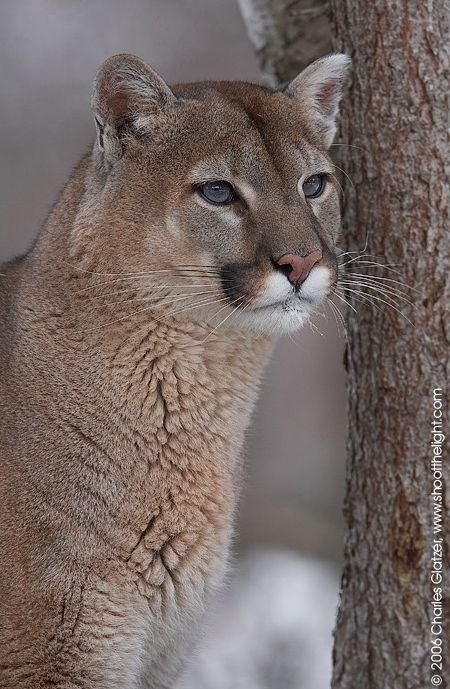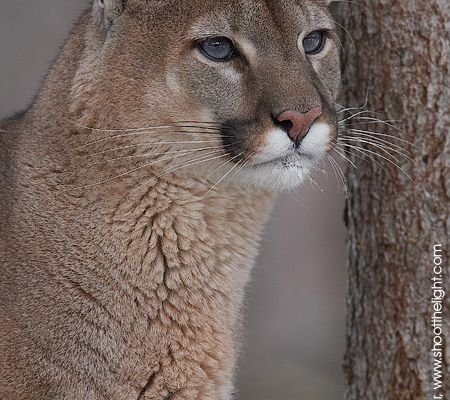
Imagine trying to navigate a complicated maze. You could rely on your instincts, or you could learn from past experiences to find the exit more efficiently. Mountain lions do something similar. They use a combination of instincts, experience, and adaptation to hunt, find mates, and avoid danger. So, let’s dive into the fascinating world of mountain lions and explore their cognitive abilities and behaviors in detail.
The Intelligence of Mountain Lions
Mountain lions are known for their impressive intelligence. Unlike many other animals, their smarts manifest not just in how they hunt but also in how they interact with their environment. They have the ability to learn from past experiences, which helps them become even better hunters. This capacity for learning means that mountain lions can adapt their hunting tactics based on what has worked before.
Think about it: when a mountain lion takes down a deer, it’s not just a brute force game. They observe their prey and notice its habits and patterns. If they find that stalking their prey from a certain angle yields success, they’ll remember that for next time. This kind of problem-solving ability is rare in the animal kingdom and shows the depth of their cognitive skills.
Mountain lions also exhibit another smart behavior: territoriality. They mark their territory using scent marking, which helps them avoid confrontations with other mountain lions. By doing this, they can assert dominance without needing to engage in dangerous physical fights. This shows not only intelligence but also an understanding of social dynamics in their species.
Learning Through Experience
Mountain lions are adept learners. They pick up skills not just through instinct but also through experiences. For instance, a young mountain lion might watch its mother hunt before attempting to stalk and catch prey on its own. This learning takes time and practice, often involving several failed attempts before success.
Here’s a neat example: imagine a mountain lion spotting a group of deer. If it rushes in and fails to catch one, it may analyze what went wrong. Maybe it was too loud, or perhaps it didn’t blend in well enough with the environment. Next time, it’ll adjust its approach. This kind of adaptive learning is a hallmark of their intelligence.
Social Behavior and Communication
While mountain lions are typically solitary animals, they do engage in social behaviors that demonstrate their intelligence. They use a variety of vocalizations to communicate, including growls, hisses, and even high-pitched screams. These sounds serve different purposes, from warning off competitors to attracting potential mates.
During mating season, male mountain lions will often announce their presence with deep, resonant roars. This not only attracts females but also signals to other males that the territory is claimed. It’s like sending out an invitation while simultaneously posting a “do not enter” sign.
Mountain lions also engage in non-verbal communication. They use body language, such as posturing and tail positioning, to convey their mood or intentions. This helps them avoid conflicts, signaling with subtle movements rather than resorting to aggressive behavior.
Territorial Behavior
Territoriality is crucial for mountain lions. They establish and defend large home ranges that can span many miles. How do they do this intelligently? By marking their territory with urine and scratch marks on trees, they send clear messages to other mountain lions. This form of communication avoids unnecessary confrontations and saves energy, showcasing their strategic thinking.
Territorial overlaps can lead to conflicts, but mountain lions tend to manage these situations wisely. They may avoid direct encounters by changing their routes or hunting times, which is a great example of adapting behavior based on environmental contexts.
Hunting Strategies and Problem Solving
When it comes to hunting, mountain lions are crafty. They often employ stealth and patience, waiting for the perfect moment to pounce. This isn’t just instinct; it’s a calculated decision based on their understanding of prey behavior.
Consider a mountain lion stalking a lone deer. It will likely choose to stay hidden behind bushes or rocks, using the terrain to its advantage. Once it gets close enough, it can rely on a burst of speed to close the gap. This blending of tactics shows their ability to think ahead and plan their actions strategically.
Moreover, mountain lions are known to use the element of surprise. They might create distractions or blend into their surroundings, making them nearly invisible to their prey. This clever manipulation of the environment is a prime example of problem-solving, showing just how intelligent these big cats truly are.
Adaptation and Resilience
Adaptation is essential for survival, especially with changing environments. Mountain lions are incredibly resilient animals. They can adjust their behaviors based on food availability and human encroachment. For example, if a mountain lion senses increased human activity in one area, it may shift its hunting grounds to avoid danger.
This flexibility is crucial in areas where habitats are fragmented due to urban development. Mountain lions have been observed using corridors of green spaces to navigate between isolated patches of wilderness. Their ability to adapt not only showcases their intelligence but also highlights the importance of preserving habitats for wildlife.
Curiosity and Playful Behavior
Despite their fierce reputation, mountain lions also display a playful side, especially when they’re young. This curiosity drives them to explore their environment, climb trees, and engage with the world around them. Such playful behavior is vital in developing their hunting skills.
Watching a young mountain lion practice pouncing on leaves or chasing after small animals is a great reminder of how learning can be fun. This play is not just about enjoyment; it helps them hone their reflexes and coordination, which are crucial for survival later in life.
Curiosity also means they are likely to investigate new sounds or smells in their environment. This inquisitiveness helps them gather information about their surroundings, paving the way for better decision-making when it comes to hunting or avoiding danger.
The Role of Instinct and Experience
While instinct plays a significant role in the life of mountain lions, their experiences shape much of their behavior. Combining instinct with learned behavior means they can adapt to new challenges and environments effectively. For instance, a mountain lion raised in a heavily wooded area might develop different strategies than one raised in open plains.
This blend of instinct and experience exemplifies their intelligence. They can rely on what their instincts tell them while continuously learning and adjusting their strategies based on what they encounter in everyday life.
Mountain lions are more than just apex predators; they are intelligent creatures with complex behaviors that reflect their adaptability and problem-solving skills. Their ability to learn from experiences and interact with their environment showcases a level of intelligence that is both fascinating and essential for their survival.
As we better understand how smart mountain lions really are, we can appreciate their role in the ecosystem and the challenges they face. It’s a reminder of the delicate balance of nature and how every creature, no matter how fierce, plays a part in the great tapestry of life. So, the next time you think about mountain lions, remember they are not just instinct-driven hunters but also clever survivalists navigating the challenges of their world with a remarkable blend of intelligence and instinct.

